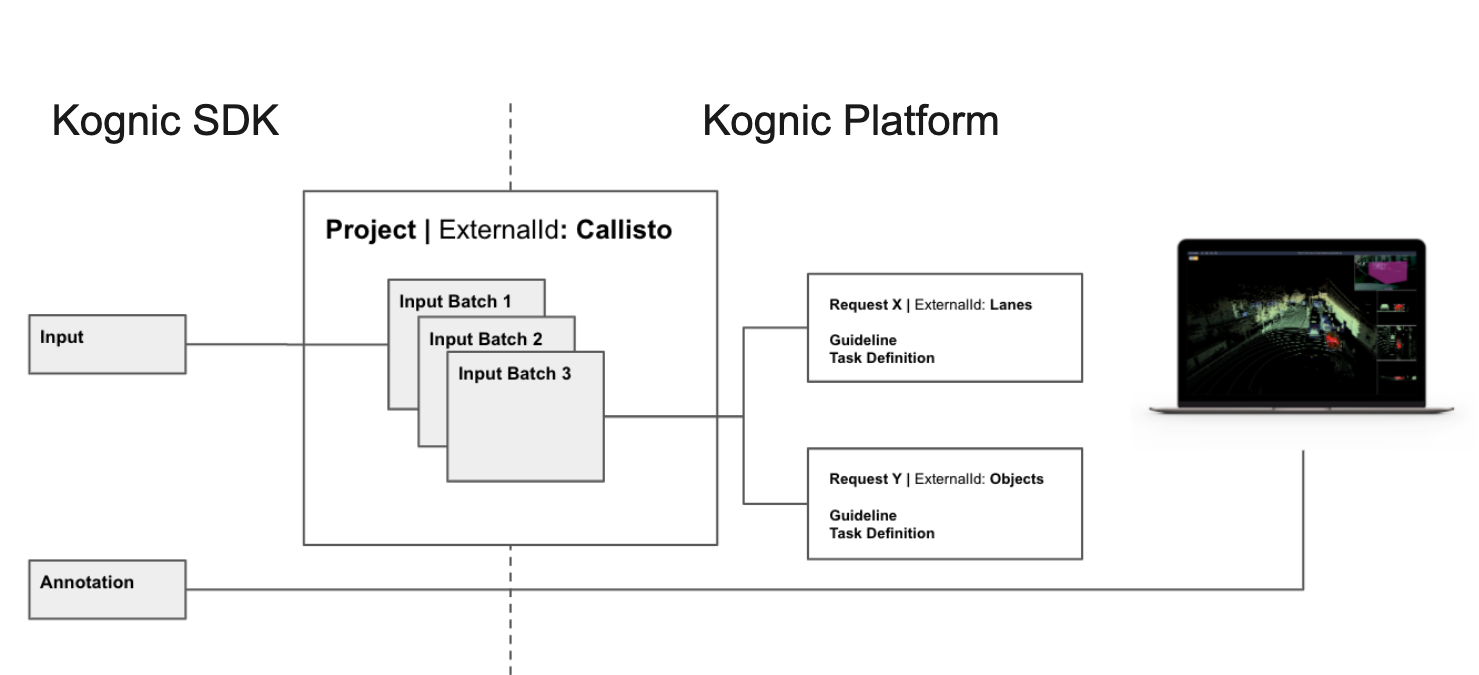Introduction
Kognic emerges as a transformative force in the realm of data analytics, offering cutting-edge solutions to harness the power of data for informed decision-making and business growth. This paragraph aims to provide a comprehensive overview of Kognic, exploring its core functionalities, innovative offerings, and the transformative impact it has on businesses across various industries.
1. Understanding Kognic: At its core, Kognic is a data analytics platform that empowers businesses to extract actionable insights from vast and complex datasets. Leveraging advanced algorithms and machine learning techniques, Kognic enables organizations to unlock the full potential of their data, driving strategic decision-making and fostering innovation.
2. Core Functionalities
a. Data Integration and Aggregation: Kognic facilitates seamless integration and aggregation of disparate data sources, consolidating information from various sources such as databases, cloud platforms, IoT devices, and social media channels. This unified data ecosystem forms the foundation for robust analytics and insights generation.
b. Advanced Analytics and Visualization: With its sophisticated analytics capabilities, Kognic allows users to perform advanced data analysis, including descriptive, diagnostic, predictive, and prescriptive analytics. The platform offers intuitive visualization tools that transform complex datasets into interactive charts, graphs, and dashboards, making insights accessible and actionable.
3. Innovative Offerings
a. AI-Powered Insights: Kognic leverages artificial intelligence (AI) and machine learning algorithms to uncover hidden patterns, trends, and correlations within data. By automatically identifying insights and anomalies, the platform empowers users to make data-driven decisions with confidence, driving operational efficiency and competitive advantage.
b. Predictive Modeling and Forecasting: One of Kognic’s key strengths lies in its ability to perform predictive modeling and forecasting, allowing businesses to anticipate future trends, mitigate risks, and capitalize on emerging opportunities. Whether forecasting sales, demand, or market trends, Kognic enables organizations to stay ahead of the curve.
4. Industry Applications
a. Retail and E-commerce: In the retail and e-commerce sector, Kognic enables businesses to optimize pricing strategies, personalize customer experiences, and forecast demand accurately. By analyzing customer behavior, market trends, and inventory data, retailers can enhance profitability and customer satisfaction.
b. Healthcare and Life Sciences: In healthcare and life sciences, Kognic facilitates clinical research, patient monitoring, and drug discovery through data-driven insights. By analyzing patient outcomes, treatment efficacy, and genetic data, healthcare providers can improve care delivery and advance medical research.
5. Implementation and Integration
a. Scalable Deployment Options: Kognic offers flexible deployment options, including cloud-based solutions and on-premises installations, to accommodate diverse business requirements. This scalability ensures that organizations of all sizes can leverage the power of Kognic to drive innovation and growth.
b. Seamless Integration with Existing Systems: Kognic seamlessly integrates with existing IT infrastructure and business applications, including enterprise resource planning (ERP) systems, customer relationship management (CRM) platforms, and data warehouses. This interoperability streamlines the data analytics process and enhances organizational efficiency.
6. Customer Success and Support
a. Dedicated Customer Success Managers: Kognic provides dedicated customer success managers who work closely with clients to understand their unique needs and objectives. From initial implementation to ongoing support and training, these experts ensure that customers derive maximum value from the platform.
b. Continuous Innovation and Updates: As technology evolves, Kognic remains committed to continuous innovation and product enhancements. Regular updates and feature releases ensure that customers have access to the latest advancements in data analytics, keeping them at the forefront of industry trends.
Key Concepts

Project
Project is the top-most concept when interfacing with the Kognic Platform. It is possible to have multiple ongoing projects, and they act as a container for other Kognic resources. Project setup is usually performed by the Kognic Professional Services team during the Guideline Agreement Process (GAP) of a new client engagement.
Within the Kognic APIs, projects are identified using an external identifier.
Batch
Input batches allow grouping of input data into smaller batches within a project. By default, every project has at least one input batch.
Ongoing projects can be benefited from having multiple batches in two ways:
- Group input data that are collected during a certain time interval
- Perform guideline or task definition changes without the need for retroactive changes.
Batch Status
| Status | Description |
|---|---|
| pending | Batch has been created but is still not fully configured by Kognic. Either during project setup or requested changes |
| open | Batch is open for new inputs |
| ready | Batch has been published and no longer open for new inputs. |
| in-progress | Kognic has started annotation of inputs within the batch. |
| completed | Annotations has been completed. |
Request
During GAP, projects can have several annotation types as the end goal. For example, a project consisting of images can be assigned for both lane detection and object annotation. Within Kognic, a Request represents a specific annotation goal for a given input. We divide big and complex projects into several independent annotation types. This makes it possible to:
- Reduce the cognitive load on the annotators
- More annotators can work on the same data in parallel
- Simplify user interfaces
All of these contribute to a high level of quality while also reducing the total time needed for producing an annotation.
Guideline
In order to produce annotations, one needs to know what to annotate and how. This type of information is found in Guideline. A guideline defines what specific object to mark (e.g. vehicles and pedestrians), as well as how (e.g. bounding box). A guideline also includes detailed information about how to interpret the data, e.g. what it means by a vehicle is “heavily occluded”.
Task Definition
Task Definition describes what should/could be annotated. How many object types? Bounding box, semantic segmentation or lines/splines for each object type? What are the properties for each object type? Task definitions are json files that the Kognic Professional Services team generates from the guideline. The task definition is then used by the Kognic App to construct the appropriate drawing tool. In other words, task definition can be understood as the machine readable quivalent of a guideline.
Scene
Before setting up any annotation task, the raw data needs to be correctly uploaded to the Kognic Platform. The scene specifies how data from different sources are combined together. Resources are images and point clouds, as well as metadata and calibrations (define sensors’ properties). We support different types of setup, for example:
- Image(s) from a (multiple) camera(s)
- Image(s) from camera(s) combined with lidar point clouds
Another concept related to scene is frame. A frame is a discrete moment of a scene in time. Scenes can be either single frame or sequence (multiple frames). Sequence should be used when temporal information is important for producing the annotation.
Scene Types
| Type | Description |
|---|---|
| Cameras | A single frame consisting of image(s) from 1-9 cameras |
| LidarsAndCameras | A single frame consisting of 1-20 lidar point clouds and image(s) from 1-9 cameras |
| CamerasSeq | A sequence of frames, each frame consisting of image(s) from 1-9 cameras |
| LidarsAndCamerasSeq | A sequence of frames, each frame consisting of 1-20 lidar point clouds and image(s) from 1-9 cameras |
| AggregatedLidarsAndCamerasSeq | A sequence of frames, each frame consisting of 1-20 lidar point clouds and image(s) from 1-9 cameras. However, point clouds are aggregated over time, producing a unified point cloud. |
Conclusion
Kognic stands as a beacon of innovation and efficiency in the field of data analytics, empowering organizations to extract actionable insights and drive business growth. With its advanced analytics capabilities, innovative offerings, and commitment to customer success, Kognic revolutionizes the way businesses harness the power of data, paving the way for informed decision-making, operational excellence, and competitive advantage in today’s data-driven world.

